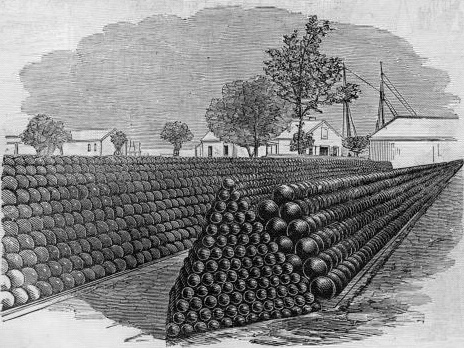
In war memorials with cannons and stacks of cannonballs, the cannonballs are sometimes stacked as a four-sided pyramid, with the base as a square of cannonballs with n balls on each side. An alternative is to stack them in a three-sided pyramid, which is in fact one of the Platonic solids, a tetrahedron.

This tetrahedron of cannonballs has a base that is an equilateral triangle of cannonballs with n balls on each side. The number of balls in that triangle is given simply by adding together the numbers from 1 to n. On top of each layer (starting from the base) is a triangle with one less ball on each side, up to the top-most layer with a single ball.
Given the number of cannonballs on each side of the base, compute the total number of cannonballs in the entire tetrahedral stack.
The first line contains a single number n, giving the number of tetrahedral problems posed, for a maximum of 100 problems. Following that are exactly n lines, each with a single number giving the number of cannonballs on each side of the base for a tetrahedron of cannonballs, a number greater than 0 and less than 1000.
6 1 2 3 5 27 999
For each problem, output the problem number (starting from 1), a colon and a blank, the number of cannonballs on each side of the base, one blank, and finally the total number of cannonballs in the tetrahedron.
1: 1 1 2: 2 4 3: 3 10 4: 5 35 5: 27 3654 6: 999 166666500